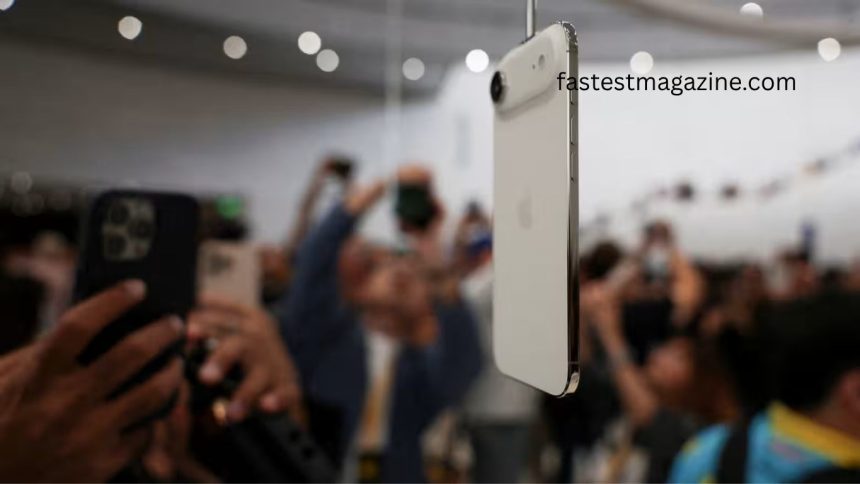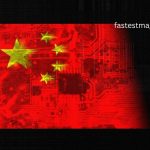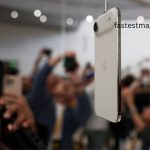Apple’s unveiling of the iPhone Air was billed as a defining moment: its slimmest iPhone ever, with a bold design choice — no physical SIM tray, relying entirely on eSIM. But the excitement is meeting a significant obstacle: in China, regulators have not yet cleared eSIM support across all carriers, leading Apple to delay the device’s launch in what is one of its most crucial markets.
The iPhone Air: A Design Gamble
At 5.6 mm thick, the iPhone Air is Apple’s boldest design to date. To achieve such a slender profile, the company eliminated the physical SIM slot entirely and made the device
This decision was not aesthetic alone: according to Apple, it gives more internal space for a larger battery and reduces mechanical complexity.
But while eSIM has gained traction in many markets, mainland China remains a difficult terrain. Historically, iPhones sold in China have retained physical SIM trays because local carriers and regulators have not fully embraced eSIM deployment.
The Delay in China: What’s Going On?
When Apple announced the device, the global rollout included a simultaneous pre-order phase expected to start September 12, with deliveries commencing September 19. However, in China, Apple’s website now displays a vague message: “release information will be updated later.”
The root cause is regulatory clearance. In China, wireless carriers must receive government approval before offering devices with eSIM functionality. That approval has not yet been granted.
Apple has publicly stated that it is working closely with regulators and the three state-owned telecom operators — China Mobile, China Telecom, and China Unicom — to enable eSIM support in China. But it emphasized that this support is “subject to regulatory approval.”
Thus far, China Unicom appears to be the only operator that has been flagged as having some readiness to support eSIM for iPhones, though the full scale of readiness remains unclear.
Why China Is a Tough Case for eSIM
China’s cautious approach to eSIM stems from several intertwined concerns:
Regulatory control & security
The government maintains strict oversight over telecommunications infrastructure and data flows. The shift from physical SIMs to remote‐provisioned eSIM profiles has implications for how identity, security, and lawful interception mechanisms are managed. Regulators must ensure that carriers and devices comply with local security, authentication, and surveillance standards.
Carrier readiness & infrastructure
Even if regulators give the green light, carriers must build or upgrade systems to support eSIM provisioning, profile management, user identity verification, and customer service around digital SIMs. Rolling out such infrastructure across a large user base takes time and investment.
Legacy usage patterns
Many Chinese consumers are accustomed to physical SIM cards. Carriers have built processes and retail support around those. Transitioning to an eSIM-first model involves retraining staff, updating systems, and educating users about how the digital SIM workflow works (e.g., downloading a SIM profile rather than inserting a card).
Staged adoption logic
Some carriers may be reluctant to allow a competitor to reap the benefits of eSIM first. In fact, reports suggest other telecom operators besides Unicom may have pushed to delay the iPhone Air rollout until all were ready, to avoid losing competitiveness.
Because of these challenges, China lags relative to markets like Europe, the U.S., and parts of Asia on eSIM adoption.
Implications for Apple in China
China remains one of Apple’s most competitive and strategically important markets. The delay of a flagship device like iPhone Air there is not inconsequential:
Sales opportunity lost / shifted
While the other iPhone 17 models (17, 17 Pro, 17 Pro Max) are available for preorder and slated for regular rollout in China, the Air’s absence at launch may push potential buyers towards those models (if they’re willing) or to competitor devices.
Erosion of momentum and perception
A delay in a marquee product can generate uncertainty or weaken the narrative of seamless global availability. In a market where Apple competes against nimble domestic brands (Huawei, Xiaomi, Oppo, Vivo) that can adapt quickly to local constraints, this is a vulnerability.
Regulatory friction spotlighted
This incident underscores how design decisions must align with regional regulatory regimes. Apple’s global push toward eSIM-only devices might hit further hiccups in other markets with cautious telecom regulators.
Strategic re-evaluation
Apple might now need to delay or rework eSIM-only rollout in other countries where regulatory or telecom readiness is uncertain. Ensuring carrier cooperation and regulatory acceptance becomes just as critical as the hardware design itself.
What Needs to Happen
For the iPhone Air to go on sale in China, several moving parts must align:
Regulatory approval
Authorities—most notably China’s Ministry of Industry and Information Technology (MIIT)—will need to grant clearance to carriers to offer eSIM services on iPhone devices.
Carrier implementation
China Mobile and China Telecom must complete their systems, retail preparation, and testing to support eSIM provisioning, user authentication, and customer service functions. Apple and carriers must coordinate on back-end workflows, store procedures, and support.
Retail readiness and training
Apple-authorized resellers will need to be trained to support customers who are not used to eSIM-based activation flows. Staff must help users transition — scanning QR codes, performing identity verification, explaining profile downloads, etc.
Communication & customer reassurance
Apple must manage user expectations in China, clarifying when Air will be available, how eSIM activation works, and how existing iPhone users can transition (if applicable). Marketing and messaging will be critical to mitigate frustration or confusion.
Backup contingency planning
Should regulators or carriers drag their feet, Apple might consider fallback options — such as introducing a hybrid version with a physical SIM slot (though that would complicate design and go against their global eSIM-only vision), or offering import variants (though those may not support local eSIM profiles). As of now, Apple states that iPhone Air units purchased outside mainland China cannot install Chinese carrier eSIM profiles.
Broader Lessons: Innovation vs. Regulation
This episode with the iPhone Air offers cautionary lessons for device makers pushing design innovation:
- Regulatory readiness is as important as technical readiness
- Even if hardware is perfected, failure to secure regulatory permissions can stall market access.
- One-size-fits-all global designs may bump local constraints
The notion of rolling out identical devices globally is being tested by divergent regulatory landscapes.
Carrier alignment matters
Without carrier buy-in, what seems like a smooth upgrade to digital SIM can become a blocker.
Consumer adoption curves differ
In markets where users are accustomed to old patterns (physical SIMs, SIM swaps), change requires education and a gentle transition.
Frequently Asked Questions:
Why has the iPhone Air launch been delayed in China?
The delay is mainly due to strict Chinese regulatory policies regarding eSIM technology. Apple’s new iPhone Air is designed to operate exclusively with eSIM, but Chinese telecom authorities have not yet approved full eSIM functionality for all carriers. Without this approval, Apple cannot officially release the device in China.
What is an eSIM, and how is it different from a physical SIM card?
An eSIM (embedded SIM) is a digital version of a traditional SIM card that is built directly into the phone’s hardware. Instead of inserting or removing a physical card, users can activate mobile plans by scanning a QR code or through their carrier’s app. It simplifies switching networks and allows for slimmer device designs — but requires carrier and regulatory support.
Which Chinese telecom operators are involved in the delay?
The main state-owned telecom companies — China Mobile, China Telecom, and China Unicom — must all receive government clearance to offer eSIM services on Apple devices. Among them, only China Unicom is reportedly somewhat prepared to implement eSIM support, but complete national readiness has not been achieved.
Why is China cautious about approving eSIM technology?
China’s government maintains tight control over communications and data infrastructure. eSIM technology complicates identity verification, data security, and surveillance processes. Regulators want to ensure all carriers meet strict compliance and cybersecurity standards before allowing widespread eSIM use.
Does this delay affect the global launch of the iPhone Air?
No. The iPhone Air launch is proceeding as planned in most regions, including the U.S., Europe, and other parts of Asia, where eSIM technology is already well-established. The delay is specific to mainland China, where regulatory clearance remains pending.
Can Chinese customers import the iPhone Air from other countries?
While customers could technically import the device, eSIM profiles issued by Chinese carriers will not work on units purchased outside mainland China. Apple has confirmed that imported iPhone Air models won’t be able to register local Chinese mobile plans until official carrier support is activated.
Is Apple considering a version of the iPhone Air with a physical SIM slot for China?
At this time, Apple has not announced any plans to create a physical-SIM version of the iPhone Air specifically for the Chinese market. Doing so would compromise the device’s ultra-thin design and contradict Apple’s goal of transitioning entirely to eSIM.
Conclusion
Apple’s delay of the iPhone Air launch in China serves as a revealing case study in the delicate balance between innovation and regulation. The company’s bold decision to go fully eSIM-only symbolizes the future of mobile connectivity — faster, sleeker, and more flexible — yet it also underscores how even the most advanced technology must adapt to local regulatory frameworks and infrastructure readiness. For Apple, this temporary setback may be frustrating, but it’s far from a failure.
By working closely with Chinese telecom operators and government authorities, Apple is paving the way for the eventual adoption of eSIM technology across the world’s largest smartphone market. Once approval is granted, the iPhone Air could not only mark a turning point for Apple but also accelerate the modernization of China’s mobile ecosystem.















